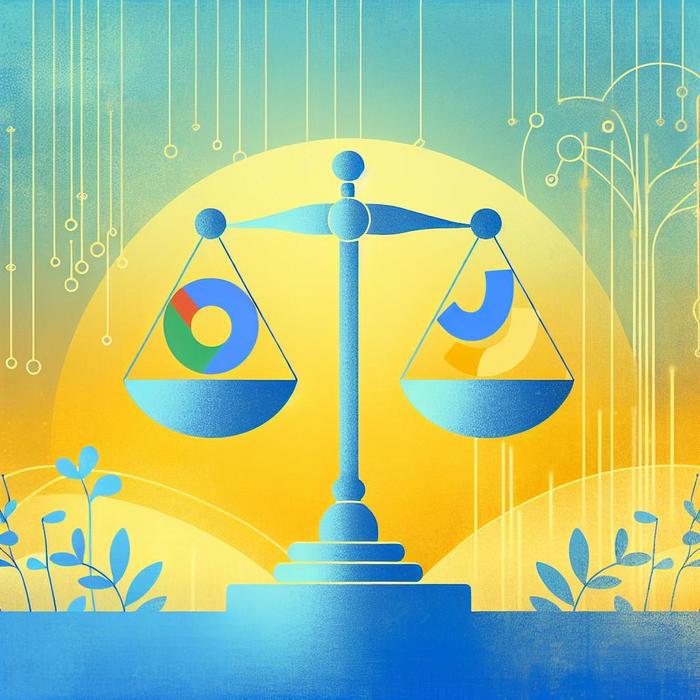Strategizing PPC Performance for Robust Business Growth
You’re well aware that, harnessing the power of the right platform is essential to maximize ad impact. Comparing the main platforms in the market, such as Google and TikTok, can provide useful insights for optimizing your digital marketing strategy.
The Power of Google’s Sophisticated Bidding System
Google has long dominated the digital advertising space, and for a good reason. Its well-oiled system is designed to maximize the efficiency of ad spend. Google offers unparalleled budget allocation tools that provide meaningful results.
One of Google’s major strengths lies in its in-depth understanding of user intent. It’s a treasure trove of user data, thanks to its dominance in search, is of immense value. This knowledge enables Google to use its algorithm to bid on prospects most effectively, thereby maximizing the return on investment.
Additionally, Google’s years of experience have led to the development of robust platform-native algorithms, which automate bidding processes and significantly improve the efficiency and effectiveness of campaigns.
Emergence of TikTok: A Game Changer in PPC Performance
While Google holds strong to its laurels, emerging platforms like TikTok are changing the game. TikTok, with its unique ad formats, offers a fresh perspective on advertising. Known for its viral and trendy user content, it presents a unique opportunity for advertisers to tap into a younger demographic and a platform that thrives on creativity and user interaction.
The novelty of TikTok’s ad formats means that users view ads as part of their in-app experience rather than interruptions. This integrated marketing approach increases chances for engagement, leading to potentially better campaign results.
While TikTok’s data on its users might not be as comprehensive as Google’s, it has proven efficient in utilizing the information it has to its advantage. The platform’s algorithms leverage real-time Long-Term Value (LTV), enabling efficient impression bids for prospects.
Google Vs. TikTok: Who Comes Out on Top?
The answer to this question is not simple and would largely depend on your exact digital marketing goals and target audience. While Google provides broad and more mature audience coverage along with an advanced bidding process, TikTok promises a younger and more engaged demographic coupled with a unique, integrated advertising experience.
It’s critical to thoroughly evaluate each platform’s potential for your specific industry. This involves understanding how TikTok ads perform in contrast to Google ads. Balance these insights with your strategic goals to make a decision that drives the highest returns.
Future Outlook and Predictions for PPC Performance
Staying ahead requires an understanding of the trajectories of key platforms. A glimpse into the potential future of PPC helps to forecast and adjust strategies accordingly to be ahead of the curve.
Maximizing campaign performance will increasingly lean on refining bidding systems. Companies will need to fine-tune their strategies, ensuring that they are pushing real-time LTV back to acquisition platforms; this will enable them to set the most efficient impression bids for prospects.
Considering this, it becomes clear that the game is not about choosing one platform over another; instead, it’s about understanding how to best leverage every platform’s unique strengths. It’s about turning insights into strategies, strategies into actions, and actions into measurable results. In doing so, your company can stand to enjoy sustainable business growth.
The Pull of Meta: Commanding Attention in a Connected World
Attracting a larger share of advertising spend among multinational brands, Meta, previously known as Facebook, offers a unique proposition. Boasting an impressive user base of 2.9 billion monthly active users, the platform offers the opportunity to build meaningful connections with an increasingly diverse audience. The platform’s segmentation tools promise precision targeting to geographically and demographically diverse audience.
Brands can utilize Meta’s AI-powered tools to leverage user data in real-time for better ad optimization. Paired with interesting ad formats and an ability to push real-time LTV into their acquisition algorithms, businesses can expect to acquire new customers more efficiently.
Moreover, Meta’s advertising solutions offer the advantage of interaction and emotional connectivity. Wisely exploiting these features can transform your marketing efforts from a simple sales push to an engaging and evocative storytelling endeavor, thus providing an enriching user experience.
Google, TikTok & Meta: An Informed Decision
The debate on choosing an ideal platform between Google, TikTok, and Meta depends upon your marketing objectives and the demographics of your target audience. While Google offers accurate intent-based targeting using advanced algorithms and a more comprehensive user base, TikTok captures the attention of a younger, more engaged audience with its interactive ad formats.
On the other hand, Meta offers a unique blend of global reach and niche audience targeting along with interactive ad formats that lend themselves to engaging storytelling.
To make an informed decision, take into account an analytical dashboard for PPC which provides a comparative performance of different platforms. Using this, you can identify which platform is aligning best with your objectives and accordingly make a decision that drives optimal results.
The Power of Integrated Marketing
With multiple platforms offering different advantages, businesses need to embrace an integrated marketing approach. This approach involves aligning your marketing efforts across all platforms to convey a consistent message. It’s important to leverage each platform’s strengths to maximize overall ad impact rather than restricting to one platform.
Successful integrated marketing ensures that you can reach your potential customers no matter where they are, reinforcing your brand message at every touchpoint. This integrated approach is central to fostering deeper connections with your audience and driving engagement across different platforms.
Staying ahead of the curve requires continuous adaptation and innovation. As search engines and social media platforms continue to digital, businesses must understand how they can leverage these platforms to their advantage.
Ultimately, the key is to devise a sophisticated strategy to maximize the combined impact of all platforms, harnessing their unique strengths to form a cohesive, results-driven marketing plan. With careful planning and execution, your business can achieve robust growth and stay competitive.
Following these strategies for increased PPC performance can deliver targeted leads, foster customer engagement, and bolster profitability. Collectively, these tactics can propel a business’s presence, driving growth and securing a robust future.


